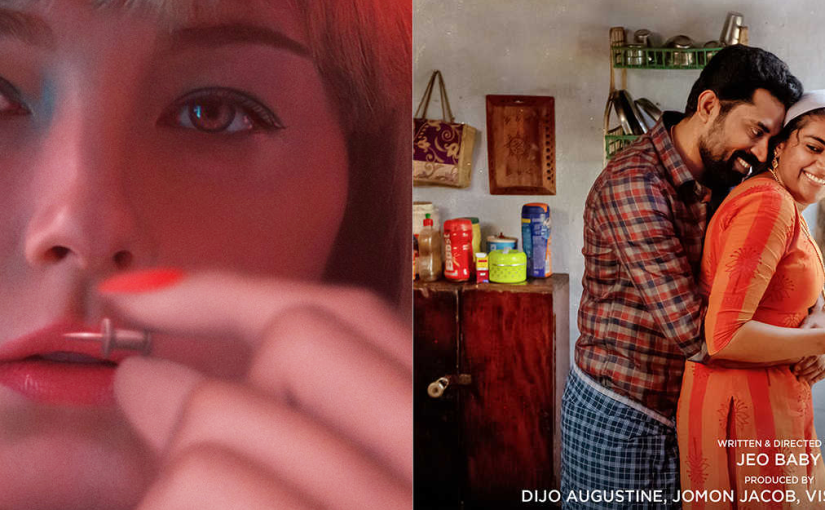Swallow and The Great Indian Kitchen
It’s no secret that we live in a patriarchal world. We are at the dawn of new cultural reform, we are now truly understanding individual choices and freedom after years of shout-outs and books. But, any progress is progress. And to mark this progress, I bring out two cinematic parallels, Swallow (2020) and The great Indian kitchen (2021).
On the surface level, they might appear as two different films. But the thing that I clubbed them together is because in-depth they are the same movie! No, I’m not accusing of plagiarism, but I’m just pointing out the similarities in the theme. And this thematic similarities doesn’t occur from copying each other, but they exist around the world.
The common theme in both the films is the identity crisis of a woman who is deemed to be a housewife for the rest of her life. And this happens everywhere in the world. The term housewife is synonymous to housemaid, the only difference is the wife is unpaid and should provide more services than a maid.
The theme
It is no exaggeration when I say women feel choked when this happens. Why would they as individuals should let another individual overshadow their identity? Now, the husbands don’t do that voluntarily in many cases, but it is indeed happening! In the name of culture and traditions we have long been shadowing a woman’s identity.
Both Swallow and The great Indian kitchen deal with this identity crisis of a housewife in their own different ways, deconstructing norms of their own regions. While Swallow is more focused on maternity, abortion, identity, freedom; The great Indian kitchen also touches religious and other cultural sentiments.
While Swallow is cleverly crafted and dealt with metaphors and surreal/psychological elements, TGK is straightforward and loud. TGK doesn’t hesitate from being passed away as over-spoken or being too predictable. TGK only cares about conveying the message and hence it is a mission accomplished. Right from the very first frame, the message and themes are clearly visible and understood in TGK.
The films as whole
While it is an artistic choice on how to make a film, it would have been better if TGK was not predictable. But at the same time, I’m hit with the dilemma that what if that is what they wanted to create? What if Jeo Baby, the maker, intended to bore me with predictability, because that is the entire point of the film.
The film is nothing but an orthodox family and its housewife’s daily chores. Of course it’s predictable and repetitive. If this predictability was an artistic choice, it was a good thing to do so, because the message about the boredom and jail-ish feel of a housewife life is super conveyed!
But if it was a coincidence, then it was a lucky one. I wasn’t in awe looking at TGK as a film. But was in awe of the guts of the maker and the actor’s flawless acting. But if you ask if I would suggest TGK to others? Definitely I would! I urge all women and especially Indians to watch TGK!
Swallow keeps you hooked on with its interesting plot and character development. And it doesn’t feel like the plot is leading the character towards the shift. But it happens with TGK. Somewhere in the middle I felt like the character development was a bit shallow. It left a lot of doubts about the protagonist. The plot led the character shift in TGK, not how it should have happened.
We need more TGKs!
If only there were more details on the protagonist, it would have led the character development go smooth and doesn’t feel forced and projected. But Jeo Baby’s target was arranged marriage, regional cultural norms of marriage and post-married life of a housewife, so he might just have thought the details to be unnecessary. But the details would only have given a sense of completeness in the end.
India needs more movies like TGK. It is only through movies can we really make a cultural reform now. It’s time we understood why arranged marriages won’t work and only cause pain. It is already late to realise that housewives are nothing but housemaids with benefits.



